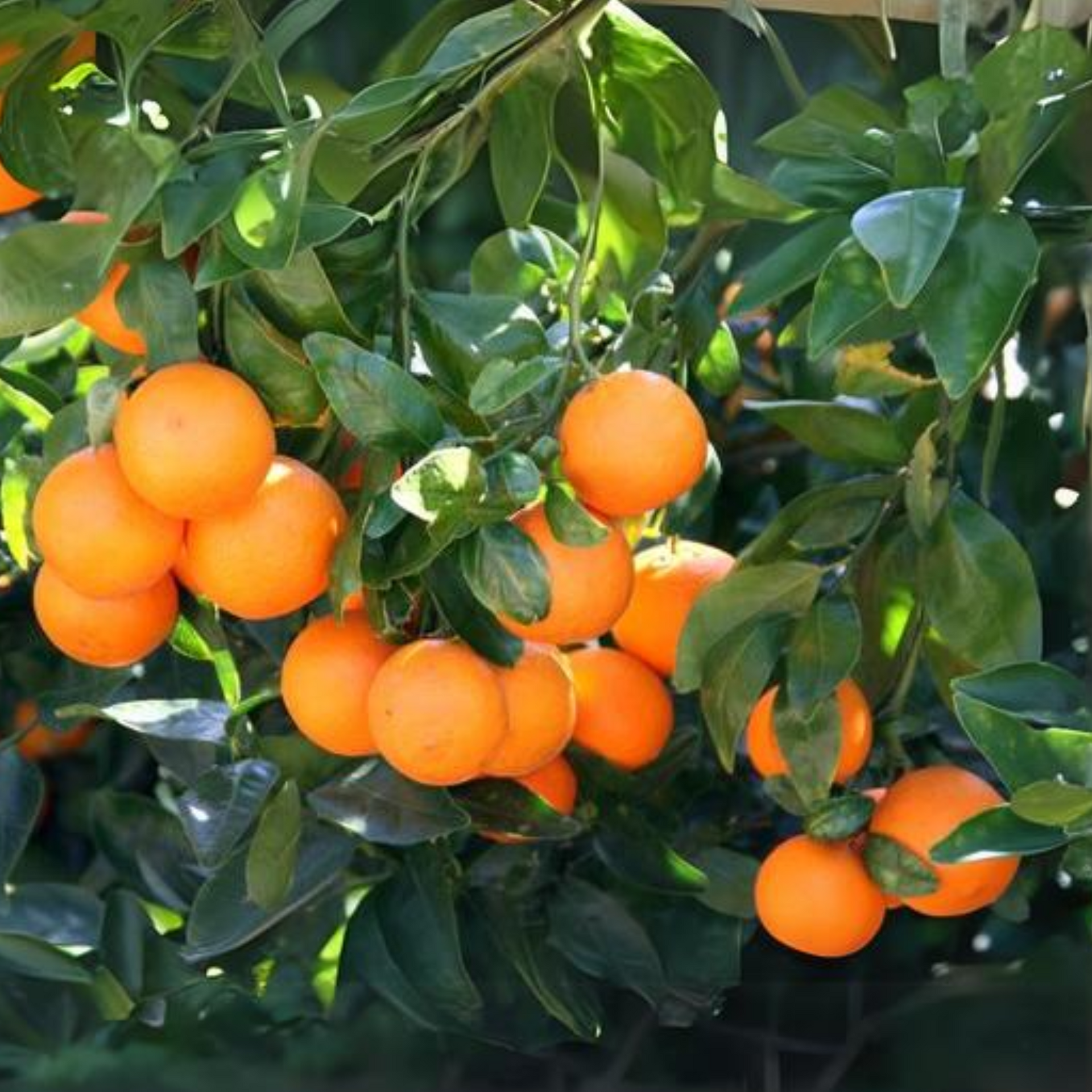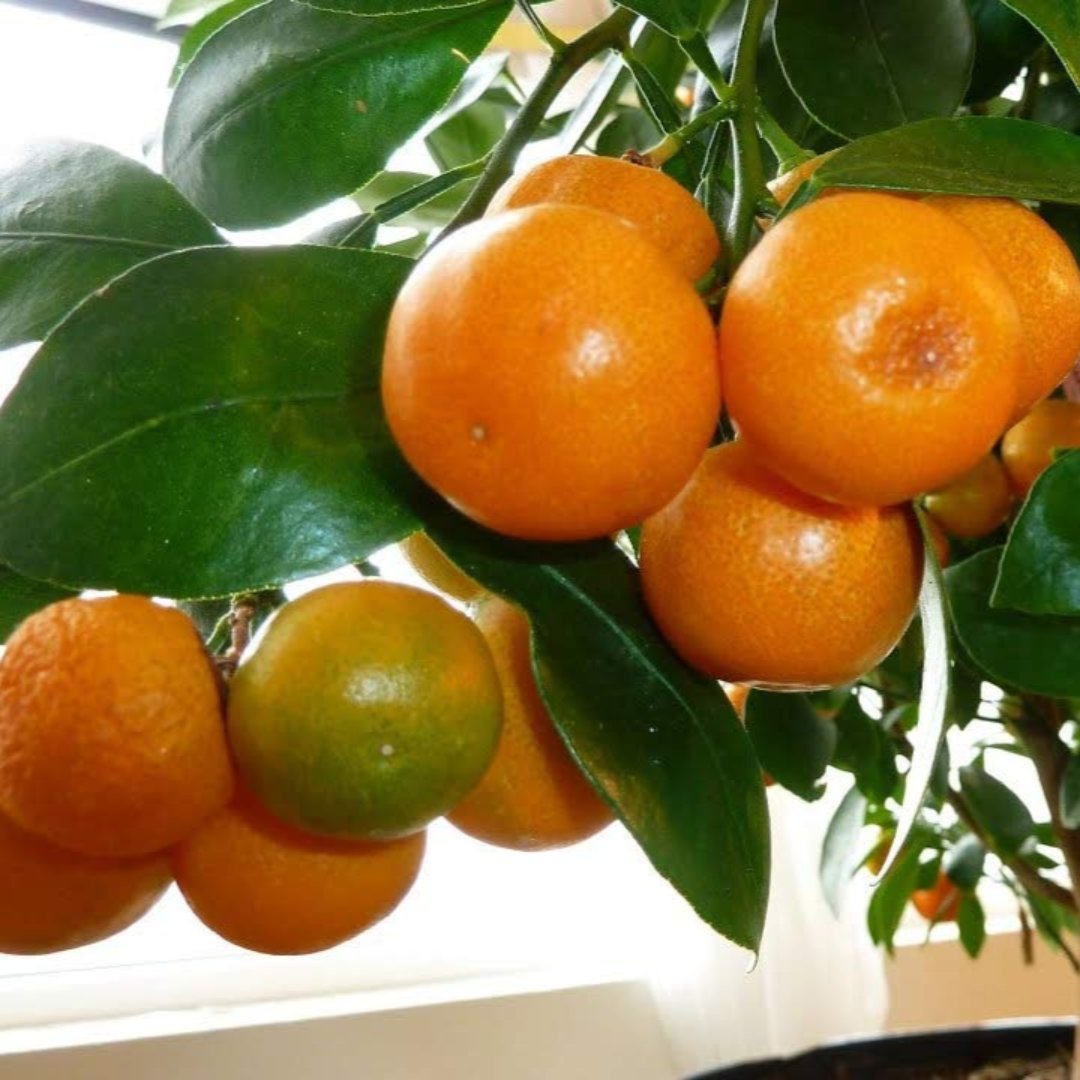


"Mini Oranges Plant: A Citrus Delight for
Your Home"
About Mini Oranges Plant
Mini oranges, scientifically known as Citrus reticulata, have taken the gardening world by storm. These pint-sized citrus wonders are not only delightful to look at but also offer a burst of tangy sweetness that can rival their larger citrus cousins. Growing mini oranges, often referred to as mandarins or tangerines, can be a rewarding experience for garden enthusiasts. In this article, we'll explore the world of mini oranges, from their characteristics and ideal growing conditions to care tips and common challenges.
Mini Oranges at a Glance
Mini oranges are a subgroup of citrus fruits known for their smaller size and easy-to-peel skin. These diminutive delights are perfect for those who enjoy the refreshing taste of oranges but prefer a more manageable portion. Here's a quick overview:
Varieties:
The most common varieties of mini oranges include Satsumas, Clementines, Tangerines, and Kumquats. Each offers a slightly different flavor profile and appearance.
Appearance:
Mini oranges are typically round, with bright orange, thin, and loose peels that make them easy to peel and enjoy.
Flavor:
These little fruits are bursting with a sweet and tangy flavor, making them a delightful snack or addition to various dishes and beverages.
Growing Conditions
Before you embark on your mini orange-growing journey, it's crucial to understand their preferred conditions. Here are some important points about plant care:
Climate:
Mini oranges thrive in regions with a subtropical or tropical climate. They prefer warm temperatures and can be grown in USDA hardiness zones 9-11.
Sunlight:
These plants need a lot of sunlight, ideally 8-12 hours of direct sunlight per day. still, consider using grow lights, If you are growing them outdoors.
Soil:
Well-draining, sandy loam soil is best for mini oranges. insure the soil pH is slightly acidic, around6.0-6.5.2.
Planting and Care Tips
Now that you have the basics down, here are some steps to get your mini orange plant started and help it thrive:
Planting:
Mini orange plants can be grown from seeds, but it's more common to start with a young tree from a nursery or use cuttings for a quicker start.
Watering:
Keep the soil constantly wettish but not doused . When the top inch of soil seems dry, water it.
Fertilization:
Mini oranges benefit from regular feeding with a balanced citrus fertilizer, especially during the growing season (spring and summer).
Pruning:
Prune your plant to maintain its shape, remove dead branches, and improve air circulation.
Pest Control:
Watch out for common citrus pests such as aphids, scale insects, and spider mites. Treat any infestations promptly.
Challenges and Solutions
Growing mini oranges can be incredibly rewarding, but it's not without its challenges. The following are some common issues and their fixes:
Pest Problems:
As mentioned earlier, pests can be a nuisance. Regular inspections and using natural remedies or insecticidal soaps can help.
Disease Prevention:
Citrus trees can be susceptible to diseases like citrus canker and greening. Practice good hygiene, remove diseased plant parts, and avoid overwatering to prevent these issues.
Frost Protection:
Mini oranges are sensitive to cold. If you live in an area prone to frost, consider covering your plant or bringing it indoors during chilly nights.
Mini oranges, with their petite size and refreshing flavor, are a fantastic addition to any garden or indoor plant collection. By providing the right conditions and care, you can enjoy the beauty and taste of these delightful citrus wonders. So, whether you're a seasoned gardener or just starting out, consider adding a mini orange plant to your horticultural repertoire for a dash of citrusy joy in your life.
Growing Mini Oranges: A Sweet Guide to Miniature
Citrus Trees
If you're looking to add a burst of citrusy sunshine to your garden or even your indoor space, growing mini oranges, also known as miniature citrus trees, is an exciting and rewarding venture. These tiny trees, which produce petite but perfectly delicious oranges, are not only aesthetically pleasing but also practical for those with limited gardening space. In this guide, we'll walk you through the steps to successfully grow your very own mini oranges, turning your space into a miniature citrus orchard.
Selecting the Right Mini Orange Variety:
Kumquat (Fortunella):
Calamondin (Citrofortunella microcarpa):
Dwarf Mandarin (Citrus reticulata):
Getting Started with Planting Mini Oranges:
Replanting:
Planting:
Sunlight:
Watering:
Caring for Your Mini Orange Tree:
Fertilizing:
Pruning:
Pest Control:
Harvesting
Overwintering Mini Orange Trees:
As temperatures drop in the fall, consider bringing your mini orange tree indoors if it's not a cold-hardy variety. Place it near a sunny window and reduce watering during the winter months.
Growing mini oranges is a delightful and fruitful hobby that brings a touch of the tropics to your living space. With the right care and attention, you can enjoy a steady supply of these miniature delights, whether you have a sprawling garden or just a small balcony. So, roll up your sleeves, and start cultivating your very own mini orange orchard today!




